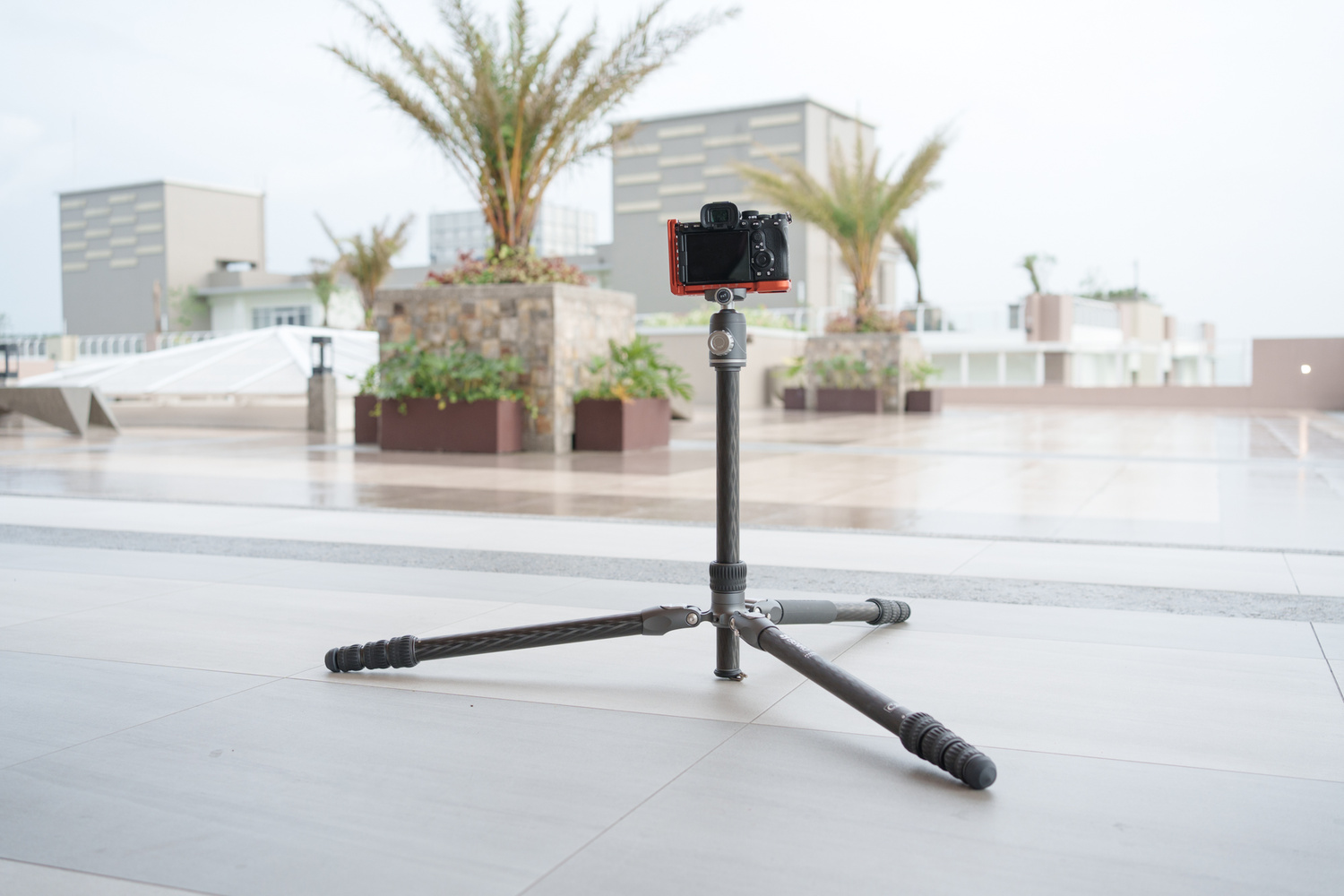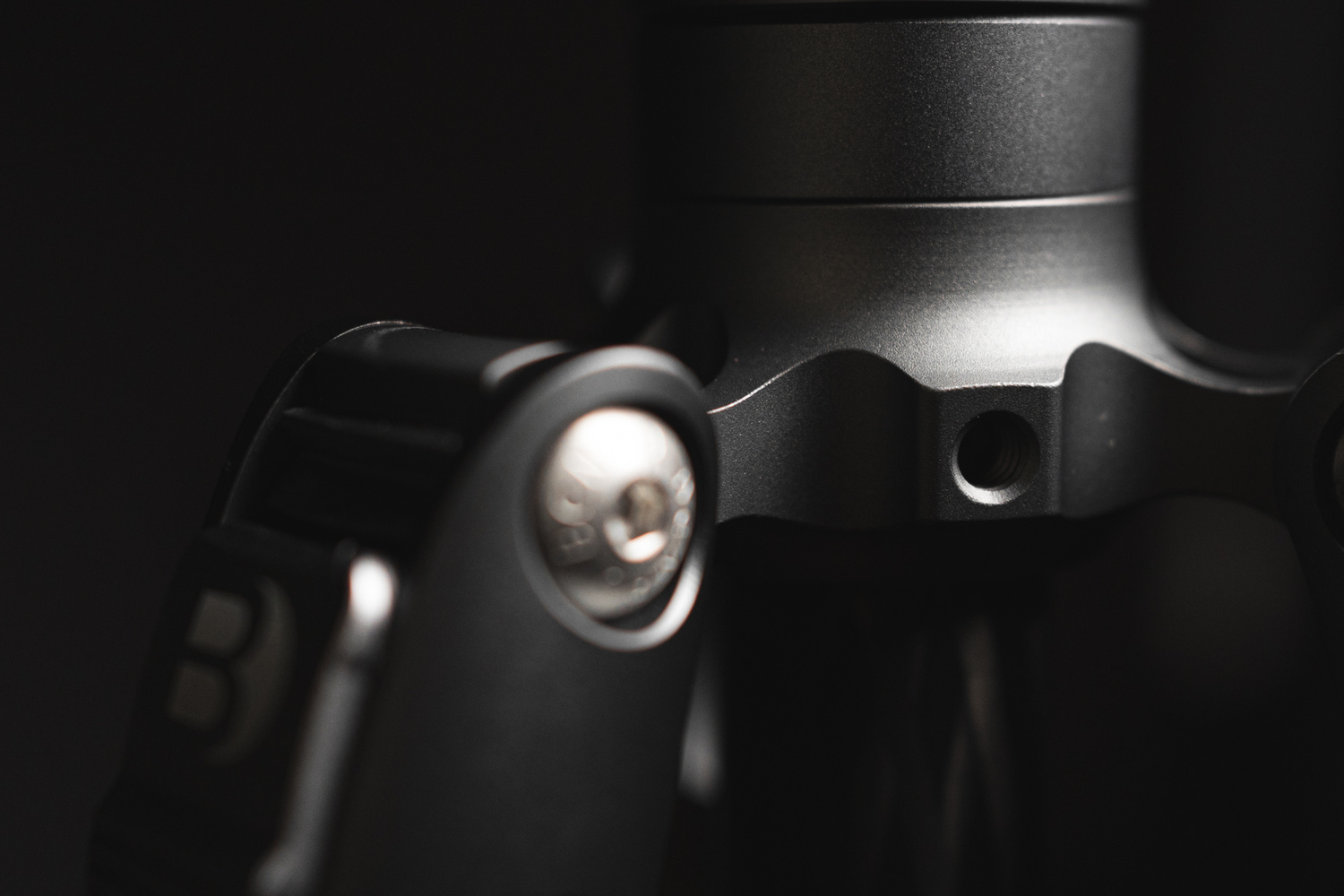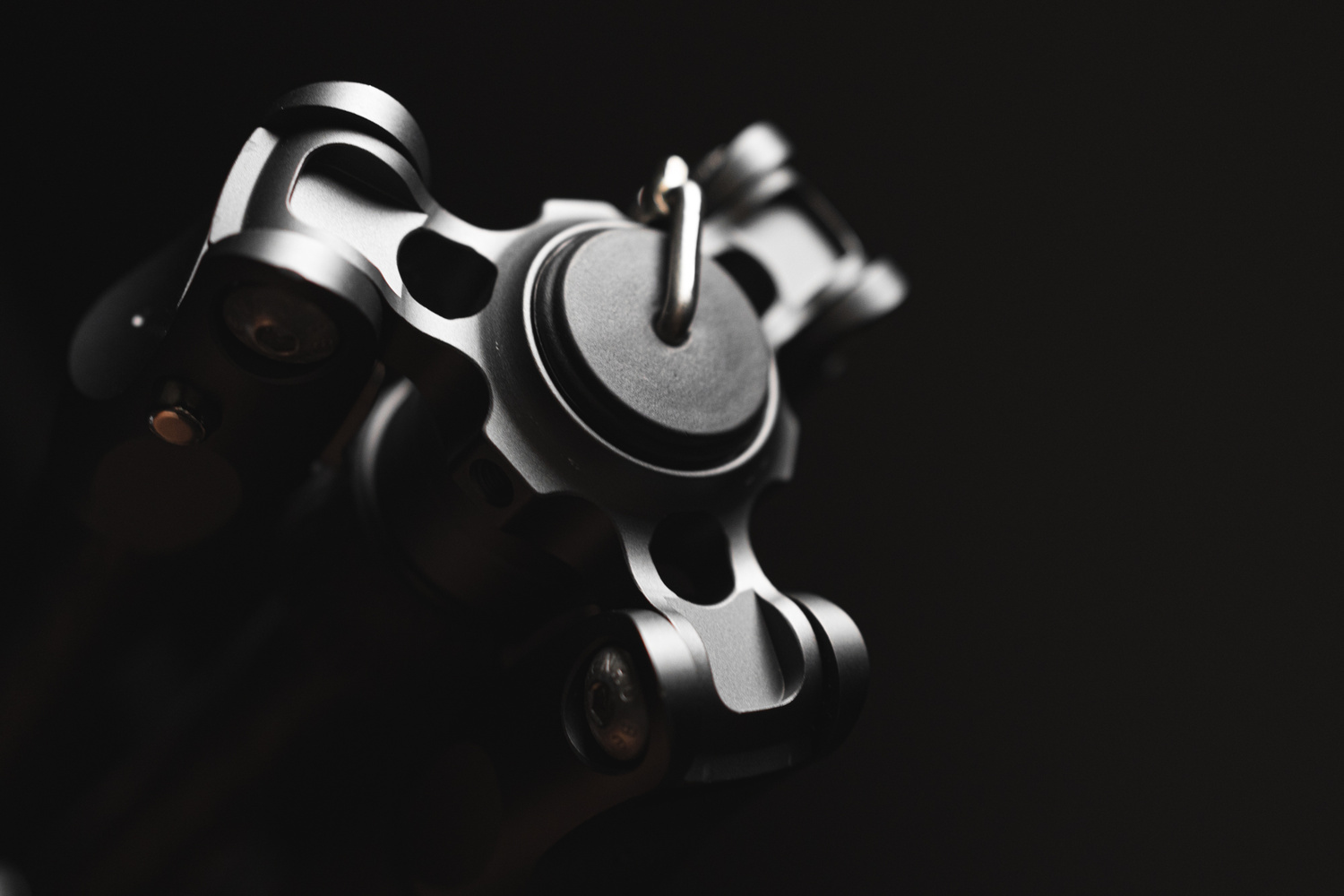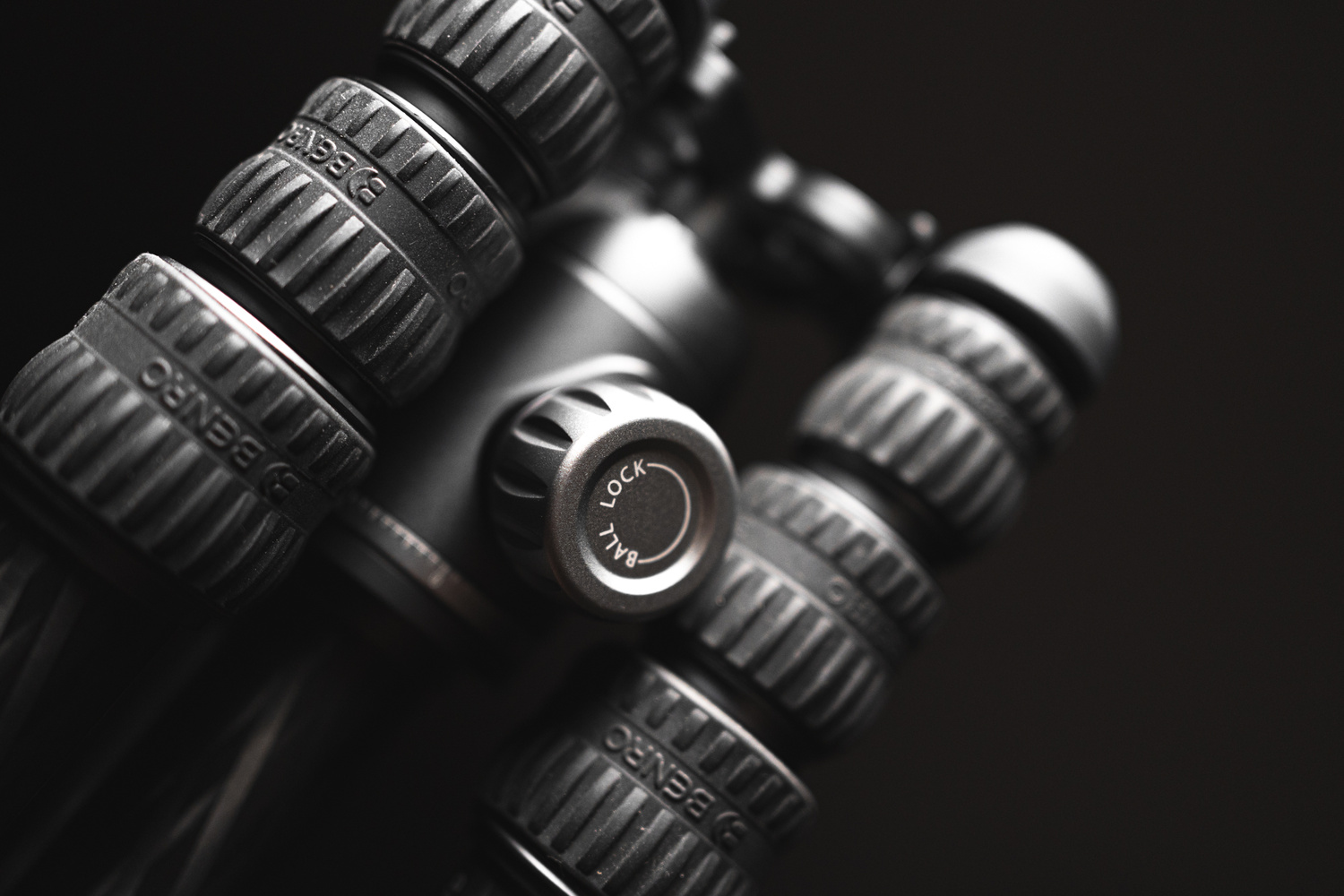If you would put your trust on just one tripod for all the shooting requirements that you commonly face, what features are non-negotiable for you? Let’s see if this carbon fiber tripod from Benro would fit that description.
Most experienced photographers would agree that your choice of tripods and support tools should be properly tailored to your workflow. With that, durability and stability should come alongside functionality and design. However, for photographers who cover a lot of different genres with varied workflows, a reliable general-purpose tripod is necessary, especially if having more than one is not a current option.
Build and Design
The Benro Rhino tripods come in various size variants. This particular one, the Benro Rhino 24C, is the middle-sized version. One of the two other variants is a more portable and travel-friendly version, while the other is a bigger and taller tripod for more heavy duty and taller camera height requirements.

The Rhino 24C is a four-section tripod made up of carbon fiber rods and aluminum alloy joints and locks. It stands with a maximum height of 66.34 inches with the center column extended, 54.92 inches with the center column kept retracted, and a minimum working height of 19.1 inches. The legs are capable of folding upwards to reduce the overall length when folded down to 19.3 inches.

The sections are held together by three twist locks on each leg. Each of the twist locks is encased in durable dark gray silicone material that gives the user better friction and grip when locking and unlocking the legs while also complementing the gray carbon fiber material.

On each of the corners of the central joint are 1/4 inch screw threads that allow mounting of additional accessories such as hooks, friction arms, and basically anything else that has a screw of that size. Considering the possibility of using heavier accessories such as field monitors, it might have been more beneficial to include at least one 3/4 inch port for bigger attachments. It would also have been nice to have a couple more bubble level indicators on the lower parts of the central joint just to have a dedicated guide for the legs themselves, since there is clearly enough surface area on it for a few more useful features.

On the uppermost section of one of the three legs is an additional rubber grip to twist the entire leg and remove it from the central joint. This removable leg then attaches onto the base of the ball-head when removed and together they form a carbon fiber monopod. While this feature is great, it may be better if there was another layer of protection against unintentionally loosening this particular leg. Though it does require quite a few turns for the leg to be removed, which means that it is unlikely that the camera will fall off, an added feature that would secure that joint would offer more security.

The included VX25 ball head comes with two control knobs, a smaller one for panning the entire head, and a larger one that unlocks the ball. This head comes with an Arca-swiss type quick release mounting clamp with a knob on one side for release and a bubble level indicator. On the other side is another knob that releases the top-most part of the quick release clamp that allows that section (along with the mounted camera) to pan independently.
Payload and Durability
The Benro Rhino 24C can carry up to 18 kilograms of gear, which, to be honest, is quite a lot considering that this is the middle size among the three variants. Given the foreseeable uses of this particular tripod, it is a good reassurance that practically any DSLR or mirrorless camera with the usual telephoto zoom lenses would fit well within the declared capacity. Some super telephoto lenses would even be within range, but it would, of course, be an obvious point that such a setup would do much better with a bigger tripod.

Overall, this tripod offers considerable stability after pushing down on the locked sections with force. It is enough to say that even with heavier-than-usual camera gear mounted, the twist locks will be able to hold it. At the same time, though this variant while relatively light, it still has a bit of weight, and the tripod remains still with mild to moderate winds. Carbon fiber is said to be more aerodynamic so that they would remain still and resist shake when being blown by the wind. However, I virtually have no way of testing that. I have, however, used this in flowing water with quite a bit of current, and the images turned out fine and shake-free.
Application
Putting things into perspective, the Benro Rhino 24C has functions very similar to many other tripods in the market. However, what this offers is a combination of features that together make up an ideal tripod setup that would be able to perform well in a variety of work requirements.

This tripod line was exclusively produced with carbon fiber, unlike other tripod models or series that come in both aluminum and carbon fiber options. Considering that there are three size variants, especially one that is smaller and has thinner rods, the Rhino line does quite well as a travel tripod with variants that work depending on your weight requirements. The 24C version doesn’t quite look like a travel tripod because of the overall size. Its legs do fold upwards, which shortens the folded length, and this mechanism is precisely what makes it travel-friendly. In addition, the fact that the carbon fiber material is much lighter makes this tripod generally beneficial for long travels on foot. Since one leg can be transformed into a carbon fiber monopod, this versatility makes the tripod an even better travel companion because of the added purpose without having to carry extra weight.

As a landscape photographer, I chose to get the Rhino 24C among the three variants precisely because of the size. By approximation, this size has a bit more height that I might need in some situations, especially when shooting cityscapes on rooftops with high ledges, but not too big that it would be too bulky and heavy to carry around. At the same time, the fact that it is not the lightest among the three means that it also wouldn’t as easily be blown by winds or dragged by flowing water. The carbon fiber material is said to be less prone to corrosion, which would make it easier to maintain more years of use even if it is constantly exposed to dust and moist environments. One drawback of the Rhino line is that the center column prevents shooting from very low angles. The center column can be inverted, however that would also mean having to use and control the camera upside-down, which wouldn’t be as nice as simply having a low-angle tripod. It would have been great if the center column was removable entirely and could instead be replaced by a short stud to connect the ball-head straight to the central joint directly to eliminate the extra height.

For indoor applications such as shooting portraits or products in the studio or even shooting interior spaces, this tripod can, of course, do the job. If there is any need to attach extra accessories, such as small lights or portable monitors, the accessory ports can accommodate. If paired with an efficient geared precision head, it can also work well for meticulously composed architectural shots or even well-designed product photography layouts. In a studio or indoor setting, the carbon fiber material and consequent (reduction of) weight may seem irrelevant, but the ease of moving it around even with a camera mounted can be beneficial.

The Benro Rhino 24C comes in a size that is most likely tall and sturdy enough for most shooting requirements but is relatively light and easier to carry in outdoor situations. While limited in shooting low angles, this general purpose tripod is a viable choice for a good range of shooting scenarios.
What I Liked:
- 18 kg payload in a relatively portable form
- Sleek overall external design
- Convertible to a monopod
What Can Be Improved:
- Size options for the accessory ports
- Locking mechanism for the detachable leg
- Needs a few more leveling guides






Thanks Nicco for this well written article - And not making us watch another video!
I quite like Benro, I think that they're underrated considering the price vs performance of them. I've been using a no-name Chinese CF tripod that I purchased years ago in Hong Kong for very little money and it's been fantastic, however I'm also thinking that it's time to buy a new one. Benro seems to be the brand to go for, but I'd probably replace the head with something from Sirui...
If I were to be a grumpy curmudgeon, would it be to ask to include metric measurements as well. "54.92 inches" and later "18 kilograms" - Obviously the original measurements must've been metric. I appreciate that there are a lot of US-based readers, but only 3 countries don't use metric (the U.S, Liberia, and Myanmar)...
Hey Jon! Thanks for that! I’ll include both units of measure next time.
Ditto for metric! :)
Ditto on writing an article instead of slinging videos.
I too am a little tired of reviewing tripods too lol! I remember doing a tripod shootout once while traveling with Elia Locardi where we were in around 6 countries in 30 days. He had super expensive tripods and we had super cheap tripods, but we also traveled with 2 Benro tripods as well. That trip turned me onto the Benro system which is still my go to tripod today. Some of the more expensive ones didn't perform any better (some actually were worse) and the cheap tripods, well I still have those for when we need to put a camera in the water or I just want something small to throw in a checked bag or something.
That said, a friend did just message me about a new Benro tripod being designed through kickstarter. Not sure what they are trying to improve but maybe I should check out the video.
Great review by the way!
All reviews aside, I firmly believe that the most important aspect of any tripod is the user’s familiarity with it and how meticulously they chose it for their actual use.
Oh yeah, it’s that self-leveling tripod with robotic micro-adjustments. I find it intriguing. Lol
Thanks Patrick!
That is Benro Theta, auto leveling tripod.
https://www.kickstarter.com/projects/benropolaris/benro-theta
The Benro system is fantastic and on par with most of the more expensive brands in all respects.
I agree. They have definitely upped their game in the last couple of years